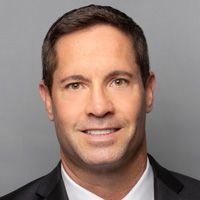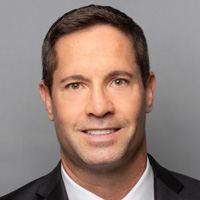The 60/40 Portfolio Is Dead. Long Live 33/33/33.
A portfolio of stocks and bonds used to be the gold standard, but it just doesn’t cut it anymore. It’s time to throw some alternative investments into the mix.


I’ve read countless articles from fellow financial advisers and investment gurus arguing for and against the traditional 60/40 (stock/bond) portfolio allocation. While many advisers have been trained to regard the 60/40 as a benchmark from the early days of their careers, a low interest rate environment means we need to get more creative.
We are living in a new world. The 60/40 was introduced nearly 70 years ago. Times have changed. In case there is any question about where I stand, put me down as firmly on the side of those who are ready to retire that strategy for good.
The new benchmark is 33/33/33; with your assets divided equally between stocks, bonds and alternatives.
From just $107.88 $24.99 for Kiplinger Personal Finance
Become a smarter, better informed investor. Subscribe from just $107.88 $24.99, plus get up to 4 Special Issues

Sign up for Kiplinger’s Free Newsletters
Profit and prosper with the best of expert advice on investing, taxes, retirement, personal finance and more - straight to your e-mail.
Profit and prosper with the best of expert advice - straight to your e-mail.
Why is the 60/40 stock and bond portfolio outdated?
It has been covered broadly in the media that stock valuations have become untenable. Inflation is at its highest level in 30 years and rates are expected to gradually increase in the years ahead. Mix those ingredients together and you’d be hard-pressed to find an analyst predicting the kind of returns we’ve seen in the public markets over the past decade.
So, what’s the fix? This is where illiquid assets (alternative investments) — such as venture capital, real estate, private equity and private debt — need to enter the chat. Alternative asset classes provide the benefit of diversification (which is why many investors remain in fixed income) along with a low correlation to stocks. With everyone looking for an inflation hedge ... you are welcome.
Research in J.P. Morgan Asset Management’s “Guide to Alternatives” revealed that allocating just 30% to alternatives in your portfolio can substantially increase your annual returns, while simultaneously strengthening portfolio stability and decreasing risk.
Keep in mind that investment in these assets must be done in conjunction with cash-flow planning. As illiquid assets can’t be quickly sold, or liquidated, they may not be for everyone. But for high-net-worth and affluent investors who don’t need cash in the short-term and are willing take on some temporary illiquidity, alternative investments make sense. Private markets are simply more attractive than stocks. Beyond generating returns, these alternatives also provide greater opportunity for building generational wealth.
Practical examples
Let’s take real estate for example. Real estate can serve as a supplement to fixed income as a vehicle to improve yield for investors with a lower risk tolerance, while providing a hard asset that presents an opportunity for real income. At Manhattan West, we invest through a fund model and focus on mainly multi-family and industrial, but more broadly, there are several REITs that can be purchased to gain similar exposure to real estate.
And then there’s venture capital and private equity, which may be a better fit for an investor who is comfortable taking on more risk and isn’t looking for investment income right away. Allocating a small portion of a portfolio to an early-stage venture capital opportunity makes sense if time is on your side. It may provide a potential for more growth than stocks, especially as companies are staying private for longer and going public at higher valuations. We tend to invest in both early stage as well as late stage (pre-IPO) companies. It’s important that you invest through a financial adviser who has access to an experienced team connected to investment opportunities in both private equity and venture capital. Information about private investing companies is not typically available for public consumption. With the help of your financial adviser, you can determine, on a case-by-case basis, whether a private equity or venture capital investment is right for you.
An alternative investment strategy works best when personalized to the needs of the individual. There is no one-size-fits-all approach to investing, and that includes alternatives. Any financial adviser worth their salt will customize your portfolio with your risk tolerance and time horizon top of mind.
So why isn’t my financial adviser offering alternatives?
Scale. Financial advisers often choose to pile their clients into liquid model portfolios because it’s easier for them to scale without having to truly customize based on each individual client's needs. There is an alarming trend bubbling in the wealth management industry in which firms try to gather as many assets as possible – put the investment side on auto-pilot – so they can spend their time and attention on growth or a sale.
Whether these advisers have deprioritized efforts to include alternative assets in customized portfolios due to a traditional – and frankly outdated – approach to allocation, or out of selfishness, is beside the point. Your portfolio should be tailored to your aspirations and goals, and it may be time to start challenging your financial counsel, asking some tough questions.
Embrace 33/33/33 as the new benchmark. Because Modern Portfolio Theory doesn’t feel so modern anymore, does it?
Profit and prosper with the best of Kiplinger's advice on investing, taxes, retirement, personal finance and much more. Delivered daily. Enter your email in the box and click Sign Me Up.

Tyler Robuck is a managing director–financial adviser at Manhattan West, where he provides tailored wealth management solutions to high-net-worth clients, entertainers and small-business owners. He brings a wealth of experience, knowledge, energy and compassion to help clients achieve their goals. Having worked through myriad market cycles, he prides himself on being a clear and steady voice in periods of growth and volatility. Outside work, Robuck enjoys meditation and is a yogi.
-
 December Fed Meeting: Live Updates and Commentary
December Fed Meeting: Live Updates and CommentaryThe December Fed meeting is one of the last key economic events of 2025, with Wall Street closely watching what Chair Powell & Co. will do about interest rates.
-
 This Is Why Investors Shouldn't Romanticize Bitcoin
This Is Why Investors Shouldn't Romanticize BitcoinInvestors should treat bitcoin as the high-risk asset it is. A look at the data indicates a small portfolio allocation for most investors would be the safest.
-
 I'm a Federal Benefits Pro: I Answer These 2 Questions a Lot
I'm a Federal Benefits Pro: I Answer These 2 Questions a LotMany federal employees ask about rolling a TSP into an IRA and parsing options for survivor benefits, both especially critical topics.
-
 Why Investors Shouldn't Romanticize Bitcoin, From a Financial Planner
Why Investors Shouldn't Romanticize Bitcoin, From a Financial PlannerInvestors should treat bitcoin as the high-risk asset it is. A look at the data indicates a small portfolio allocation for most investors would be the safest.
-
 I'm a Financial Pro Focused on Federal Benefits: These Are the 2 Questions I Answer a Lot
I'm a Financial Pro Focused on Federal Benefits: These Are the 2 Questions I Answer a LotMany federal employees ask about rolling a TSP into an IRA and parsing options for survivor benefits, both especially critical topics.
-
 Private Credit Can Be a Resilient Income Strategy for a Volatile Market: A Guide for Financial Advisers
Private Credit Can Be a Resilient Income Strategy for a Volatile Market: A Guide for Financial AdvisersAdvisers are increasingly turning to private credit such as asset-based and real estate lending for elevated yields and protection backed by tangible assets.
-
 5 RMD Mistakes That Could Cost You Big-Time: Even Seasoned Retirees Slip Up
5 RMD Mistakes That Could Cost You Big-Time: Even Seasoned Retirees Slip UpThe five biggest RMD mistakes retirees make show that tax-smart retirement planning should start well before you hit the age your first RMD is due.
-
 I'm a Wealth Adviser: My 4 Guiding Principles Could Help You Plan for Retirement Whether You Have $10,000 or $10 Million
I'm a Wealth Adviser: My 4 Guiding Principles Could Help You Plan for Retirement Whether You Have $10,000 or $10 MillionRegardless of your net worth, you deserve a detailed retirement plan backed by a solid understanding of your finances.
-
 A Retirement Triple Play: These 3 Tax Breaks Could Lower Your 2026 Bill
A Retirement Triple Play: These 3 Tax Breaks Could Lower Your 2026 BillGood news for older taxpayers: Standard deductions are higher, there's a temporary 'bonus deduction' for older folks, and income thresholds have been raised.
-
 If You're Retired or Soon-to-Be Retired, You Won't Want to Miss Out on These 3 OBBB Tax Breaks
If You're Retired or Soon-to-Be Retired, You Won't Want to Miss Out on These 3 OBBB Tax BreaksThe OBBB offers some tax advantages that are particularly beneficial for retirees and near-retirees. But they're available for only a limited time.
-
 Waiting for Retirement to Give to Charity? Here Are 3 Reasons to Do It Now, From a Financial Planner
Waiting for Retirement to Give to Charity? Here Are 3 Reasons to Do It Now, From a Financial PlannerYou could wait until retirement, but making charitable giving part of your financial plan now could be far more beneficial for you and the causes you support.